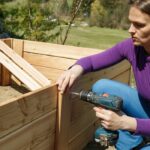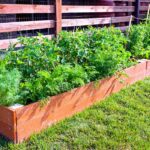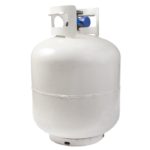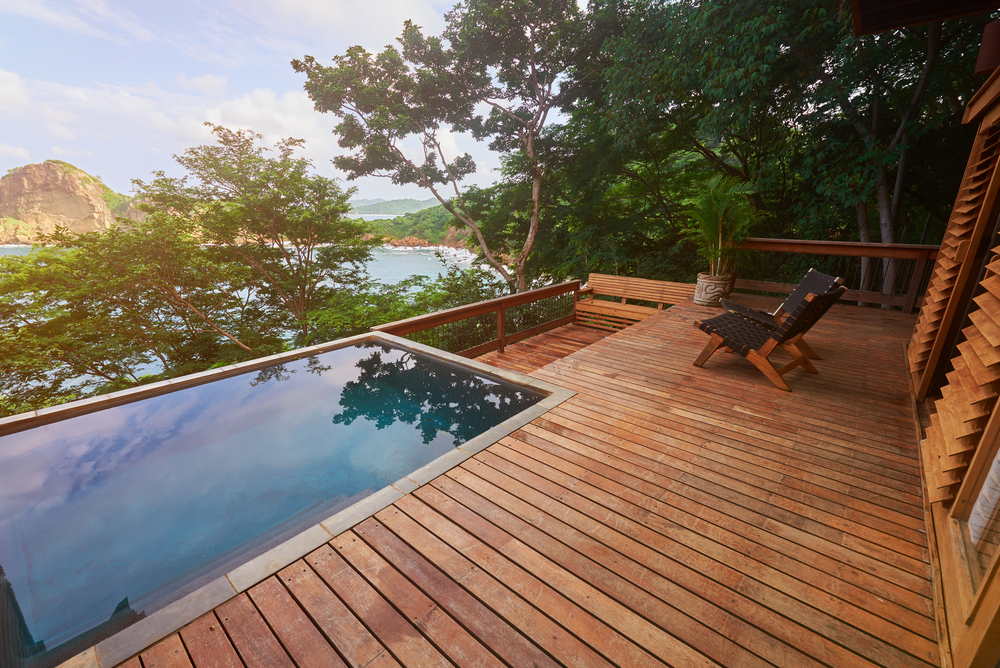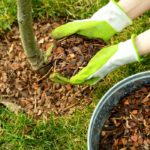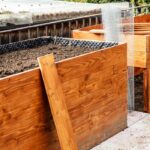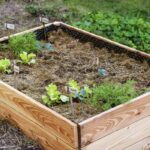Wood is an excellent choice when building your own raised garden bed. It is durable, can be rot and pest-resistant, and offer a pleasing, natural-looking aesthetic to your yard. So which is the best wood to use for a raised garden?
The best wood to use is cedar, redwood, cypress, and juniper, with great alternatives being pine, douglas fir, and black locust. All are durable and safe to use. You want to avoid pressure-treated wood and recycled wood for possible contaminants that can leach into your soil.
Wood is a popular choice by many gardeners, durable, safe, and pleasing to the eye. It’s easy to work with and offers exciting benefits like rot and pest resistance that other materials like plastic, metal, and stonework don’t. Now let’s dive in!
Factors to Consider When Choosing Wood
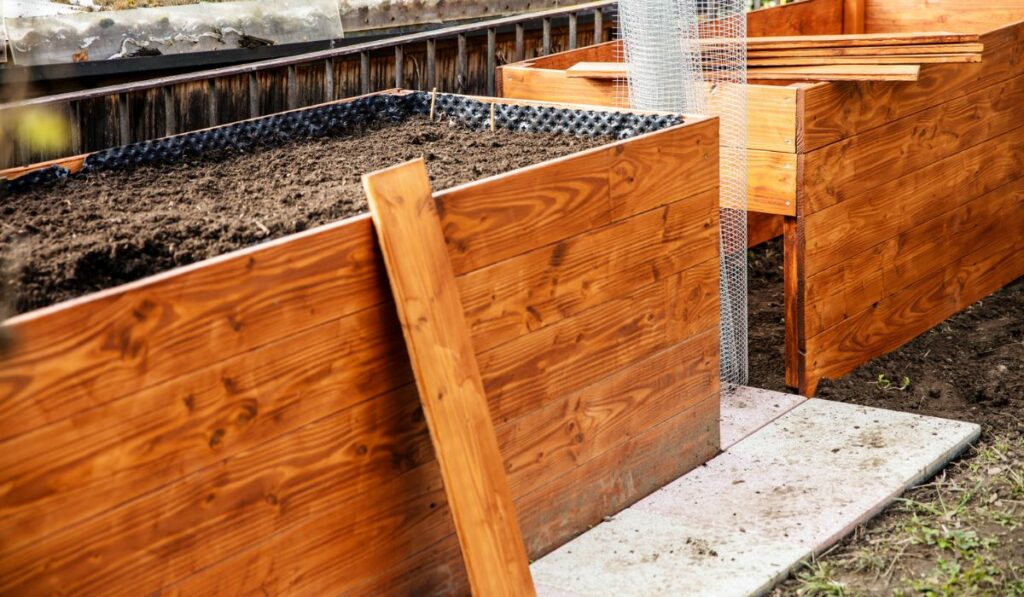
People choose to build their raised garden beds out of many different kinds of materials. However, one of the most popular materials is wood. When choosing wood to build your raised garden bed, you should consider all the factors, such as durability, safety, FSC certification, and cost.
Durability
If you plan on using the raised garden bed short term, like for a rental property, then the durability won’t be much of a factor.
However, the most common type of wood only lasts 3 to 4 years before beginning to rot and needing to be replaced.
That being said, if you plan on keeping the raised garden bed around for many years, it is vital to find a rot and pest-resistant type of wood, like cedar, that can last up to 10 years before it begins to break down.
Safety
Wood can contaminate your vegetables, and since the point of growing your food at home is to avoid chemicals and cut down on cost, this is something you thoroughly want to avoid. So to prevent any contamination of your homegrown food, you want to avoid any reclaimed wood like shipping pallets, old railroad ties, and any pressure-treated wood.
Naturally pest and rot-resistant wood like cedar or redwood are ideal for vegetable gardens in this regard.
FCS Certification
FSC stands for The Forest Stewardship Council, a global forestry conservation organization. They operate through inspection and certification processes to ensure forestry companies follow strict environmental and socio-economic standards.
Doing your due diligence in ensuring your wood has FCS certification is just one more way you can help our environment.
Cost
Sometimes, the best choice is the cheapest option. If you’re on a budget, some of the best wood for raised garden beds can be at the lower cost spectrum. However, remember that cheaper materials don’t always last as long as their expensive counterparts.
Spending more on your materials is always recommended if you plan to keep the raised bed as a long-term investment. However, if you plan on only keeping the garden bed for a few years, don’t shell out the big bucks for better material when the cheaper wood will work great.
What are the Best Types of Wood for a Raised Garden Bed?
After determining if wood is the route you want to go in building the raised garden bed, the next thing you have to decide is what type of wood it should be made out of. Several varieties work great in raised garden beds.
Cedar
Cedar is a long-lasting wood that is durable and ideal for constructing raised garden beds. In addition, it has a high level of tannins that helps repel rot and pests, making the wood an excellent selection that will last for a good ten years or so.
The downside of cedar is its cost. It is one of the most expensive wood types, though you might find the investment practical if you want the garden bed to last a decade.
Redwood
Redwood is second to cedar and cheaper, making it a great alternative. It is high in natural tannins that are on par with cedar and incredibly durable. It can last up to 10 years and even retain its quality for a few years longer than cedar in some cases.
Juniper
Juniper is a rot-resistant wood that can also make a good choice for building a raised garden bed. It’s durable and helps to fertilize your garden with its natural oils that slowly leach into the soil. However, sourcing juniper may prove difficult if you don’t live in a region thick with juniper trees.
Douglas Fir
Douglas Fir isn’t as durable or pest-resistant as cedar or redwood, but it is an affordable option. This type of wood lasts roughly 4 to 7 years and is easy to source throughout the United States. However, due to its shorter life span, it’s important to remember to replace any wood that shows signs of rot.
Cypress
If you live along the Southern coastline of the United States, cypress wood is an excellent alternative to cedar. It lasts about 7 to 8 years and is much more rot and pest resistant than other cheaper materials like pine and douglas fir.
Black Locust
Like cypress, black locust wood is rot and pest resistant and a step up from pine or douglas fir. It has the same durability as cedar and redwood, an average of 10 years, and is native to most America.
Pine
Pine is the least expensive option and is usually available in all regions. It’s ideal for short-term garden beds since it will only last about 3 to 4 years. However, the short life span of pine and the low level of tannins mean it won’t be resistant to rot, decay or pests.
Wood Types You Shouldn’t Use
Pressure-Treated Wood
Chromated copper arsenate, or CCA, is a common compound used in treated wood. It has been banned since 2003 for the benefit of safer chemicals due to its toxic properties.
However, using any pressure-treated wood in a garden bed is still not recommended.
This is because the chemicals, albeit safer than the deadly ones, can still leach into the soil and contaminate your plants. The USDA’s organic regulations have even stated that pressure-treated wood should have no contact with crops, soil, or livestock.
Reclaimed Wood
Using recycled wood is often seen as economical and eco-friendly. However, avoiding using it for your garden beds is best if you don’t know its whole history. Additionally, you have no idea what has been done to that wood prior to receiving it regarding stain, finish, or treatment.
Anything sprayed or painted onto that wood will leach into the soil and contaminate your plants.
For example, pentachlorophenol, or penta for short, is a pesticide and herbicide with restricted use. However, it is commonly used in fence posts, laminated timbers, and foundation pilings.
Penta is toxic to humans and plants, so it is crucial never to use any wood you don’t know where it has come from or what treatment it has undergone.
Should You Seal Your Wood Garden Bed?
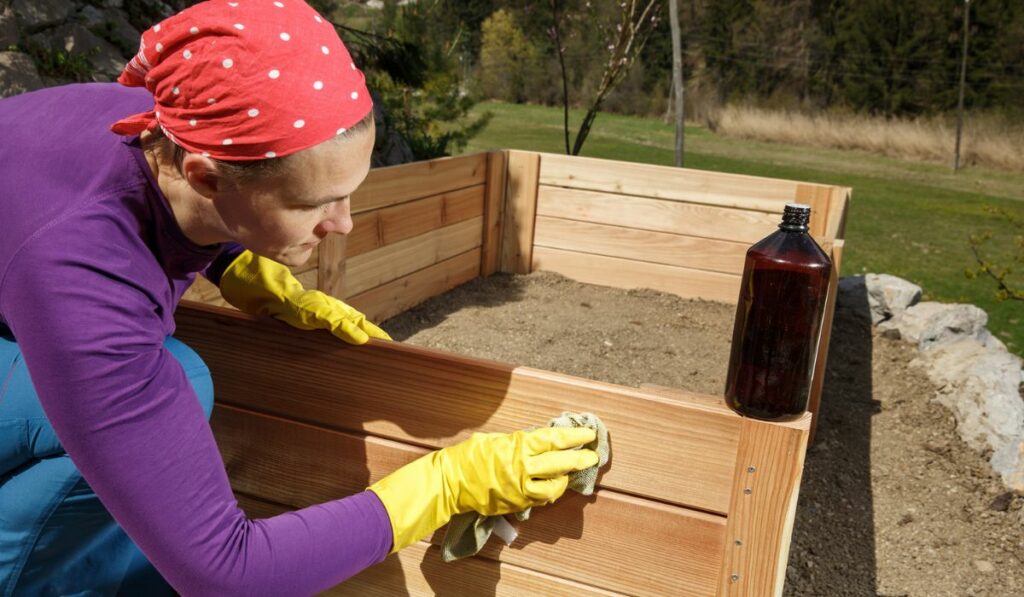
Sometimes, people choose to seal their wood to try and extend its life. But unfortunately, the results can vary, and it doesn’t always work.
Raw linseed oil is a cheap flaxseed extract that can protect wood from decay. It works as a sealant that keeps the moisture out of the wood’s porous surface and acts as a natural pesticide for fungi and other microorganisms.
Tung oil is extracted from the tung tree seeds and acts as a moisture repellent. However, it is more expensive than raw linseed oil and is often manufactured in combination with chemicals that are not safe to use in your garden. So if you decide to use tung oil, it is essential to know where it came from and how it was made.
The Best Alternatives to Wood
If you decide that wood is not for you, there are several other options, like plastic, metal, and stonework.
Plastic doesn’t last forever, but it can be sturdy and repurposed from plastic barrels or child-sized swimming pools. Just make sure you add drainage holes in the bottom, or else you could be dealing with root rot down the road.
Aluminum and steel are great alternatives, and many people cut barrels in half to create DIY planters. However, there is some concern about chemicals leaching into the soil from galvanized metal, so it’s best to avoid those kinds if possible.
Lastly, stonework such as bricks, cement blocks, or native stones is an option. They are durable but costly, especially for raised garden beds. Stone will last longer than any wood, including cedar or redwood, but that comes with a significant price tag.
Keep in mind that cement blocks will affect your soil’s pH level, making it more alkaline, so you might need to correct this with some acidity.

